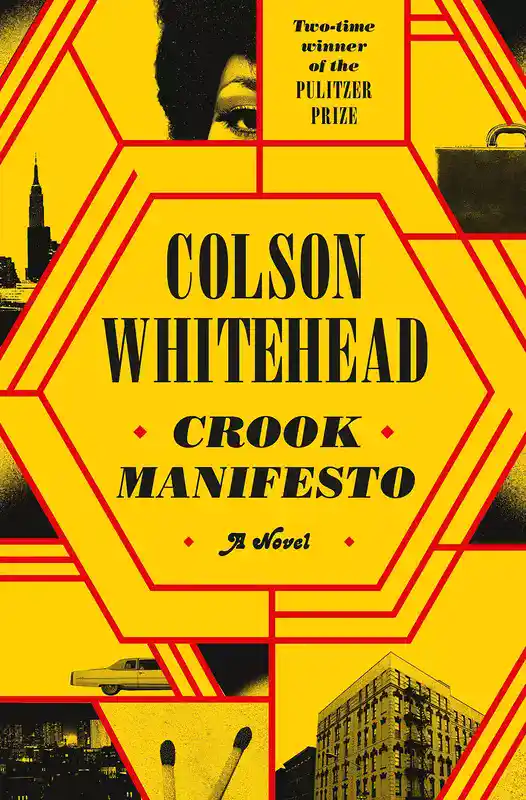This post may contain affiliate links. Read more here.
Colson Whitehead’s “Crook Manifesto” is a powerful and immersive novel that takes readers on a journey through the seedy underbelly of 1970s New York City, particularly Harlem.
Through a series of interconnected stories, Whitehead weaves together a captivating tale of crime, corruption, and family ties.
Crook Manifesto by Colson Whitehead
Vibrant Portrayal of 1970s Harlem
The story revolves around Ray Carney, a furniture store owner and former fence, who is desperately trying to stay out of the criminal world. However, when his daughter May expresses her desire to attend the Jackson 5 concert, Ray finds himself pulled back into the dangerous game. Seeking help from his old police contact, Detective Munson, Ray ends up getting entangled in a web of favors and illegal activities.
As the narrative unfolds, the story jumps through different years, offering a kaleidoscopic portrait of Harlem in the 1970s. The city is on the verge of bankruptcy, crime is rampant, and a shooting war between the NYPD and the Black Liberation Army has erupted.
Amidst this chaos, Ray and his endearingly violent partner in crime, Pepper, find themselves facing dangerous adversaries, including mobsters, hitmen, and corrupt officials.
Whitehead’s masterful storytelling brings Harlem to life, vividly capturing the essence of the era and its colorful characters. The author skillfully weaves humor and darkness together, creating a compelling and immersive experience for readers.
Crime Fiction with a Deeper Meaning
The book has received praise for its exceptional storytelling and its portrayal of Harlem as a central character. Whitehead’s ability to blend crime and historical fiction sets this novel apart from typical genre conventions. His characters are multidimensional, and their struggles feel genuine, making it easy for readers to connect with them on a deeper level.
While the book contains violence and unlawful activities, it never loses its sense of humanity. It explores themes of family, survival, and the complexities of morality, making it more than just a thrilling crime novel. The writing style is rhythmical and engaging, propelling the reader forward, eager to discover what happens next.
Whitehead’s writing is nothing short of dazzling. He brings 1970s Harlem to life, capturing its gritty atmosphere and the struggles of its inhabitants. The book is filled with humor, wit, and a sense of urgency that keeps the reader engaged throughout.
Compelling Characters
At the heart of “Crook Manifesto” is a captivating portrayal of family dynamics. Carney’s attempts to protect his daughter and navigate the complexities of his criminal past make for a compelling character study. The bond between Carney and Pepper, despite their flaws and criminal inclinations, adds depth and heart to the story.
The novel also tackles broader themes, including the impact of Black Power movements on Harlem, the changing dynamics of filmmaking during the era of Blaxploitation, and the resilience of a community facing multiple challenges.
In addition to the engaging narrative, Whitehead’s use of language is masterful. He skillfully weaves together various perspectives, providing insight into the minds of the characters and the city itself. The book’s episodic structure, reminiscent of a noir crime novel, adds to its unique charm.
Final thoughts
Readers familiar with Whitehead’s previous work, particularly “Harlem Shuffle,” will find “Crook Manifesto” to be a satisfying continuation of the Harlem saga. However, the novel stands on its own, offering a vivid and evocative portrayal of a city on the edge.
In conclusion, “Crook Manifesto” is a darkly funny and thought-provoking novel that delves into the complexities of crime, family, and survival in 1970s Harlem.
Colson Whitehead’s captivating storytelling and immersive world-building make this a must-read for fans of crime fiction, historical fiction, and anyone looking for a compelling exploration of a turbulent era in American history.
